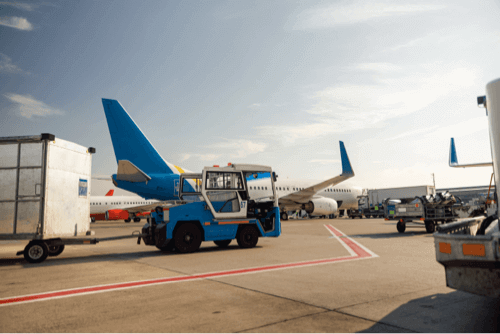
Logistical HUB: Know what it means and why
Logistics is a branch that has undergone several transformations and evolves more and more over time. As it evolves, new methods of organization are created or old methods are improved, which end up being able to increasingly improve the connection and transport between people. One of these newer means is the logistical HUB, which promotes, as we will see later, the efficient organization and planned commodity
The logistic HUB together with other methods help to improve the transport experience precisely because they are associated with the improvement of its parts, whether they are the means of transport that undergo renovations and new directions, whether their direction or commercial direction that may pass to point to where you really need to, dealing with each product in the best way.
Content Index
What is a logistical hub?

The logistic HUB is one of the newest techniques in the world of deliveries. It works from a strategically located point to be able to serve multiple routes (internal or international) and transport sectors, while optimizing the complexity of logistics operations.
It can be used both in the air and road, rail or waterway, logistics HUBs are currently reaching both Brazil, as we will see later, and international companies, because currently in a world where deliveries are extremely important, delays end up becoming serious within the economy, especially in an integrated economy.
What are the advantages of integrating logistical hubs?

Among the advantages of integrating logistics HUBs are agility, efficiency, integrated connection and cost cutting. Being able to approach from the primary to the tertiary sector, focusing mainly on the optimization of product deliveries.
Through strategically located points, delivery centers are able to plan appointments with other points, nearby replenishment locations, nearby shopping centers, in addition to being able to schedule based on the intersection between urgency and availability.
In addition, there is also the opportunity to cut costs, considering that with a method prior to the logistical HUB, there would perhaps be the possibility of greater spending on fuel, employees, interstate bureaucracy and tolls. By counting on different possible means of transport, the logistics HUB is able to guide a commodity with the greatest possible agility.
Logistics hub in Paraná

In the first half of 2021, the ports of Paranaguá and Antonina in Paraná reached a historic record of cargo handling. More than 29 million tons were moved according to the Ministry of Economy. As these two ports are extremely important points for the country, since they reach 70% of the Gross Domestic Product in the region, it is necessary to observe how economic flows and export corridors will deal with this in the future.
One of the alternatives is to agree with some of the Union's plans for the logistical corridors that will be established in the future. Most of these corridors cross both the coast and the Paraná, a state that meets several countries and maintains contact with almost the entire South-Southeast axis of the country (that is, its strongest economic area). This only demonstrates the importance of the flow that will be given between this region and the adjacent ones.
The development of the logistics hub of Paraná, which moves more than 5 billion reais, brings together all these new and old problems, and points to a solution for them at the same time, as it can take advantage of the region's economic situation and use it , as well as expanding the rail and port transport sector, as we will see later, in a way that integrates the entire Brazilian economic system, strengthening it as a whole.
Changes in Brazilian port logistics

The forecast for the future, therefore, is for a large flow of products, even greater than today, passing through Paraná, the coast and the Southeast region. More than enough reason for a transformation in local logistics with logistics HUBs, which will be able to renew the Brazilian port infrastructure, and shape it around new functions, new routes, new deliveries, new commodities and new ideas.
In this case, the local strategy applied here returns to the entire country and also to neighboring countries, since by affecting trade and the local transport sector, the rest of the country communicates and inevitably integrates into this structure.
When the railroads, which are currently in an increasing activity, reach their rightful role within this organizational system, it will serve as an example for all other integral parts that the logistical HUB can achieve.
Conclusion
In the end, the logistics HUB seems like the logical end of current solutions with delivery. In a world increasingly dominated by remote actions, by functions that are optimized to the maximum, it is impossible to think of another way of dealing with the organization of products, both nationally and internationally.
When demand exceeds supply, what must be done is to increase it, find new ways of producing and distributing it, so that the most is taken from the commercial relationship. Currently, countries increasingly rely on advanced and intelligent integration, and it is impossible not to see logistics HUBs as a central means of this complete integration.
Searchs:












